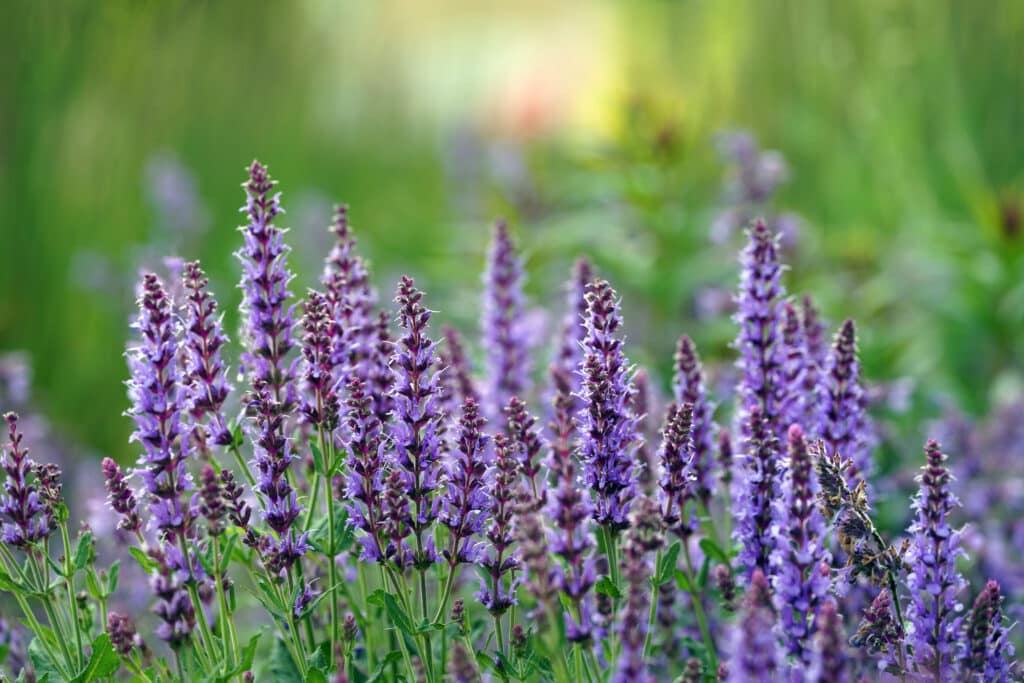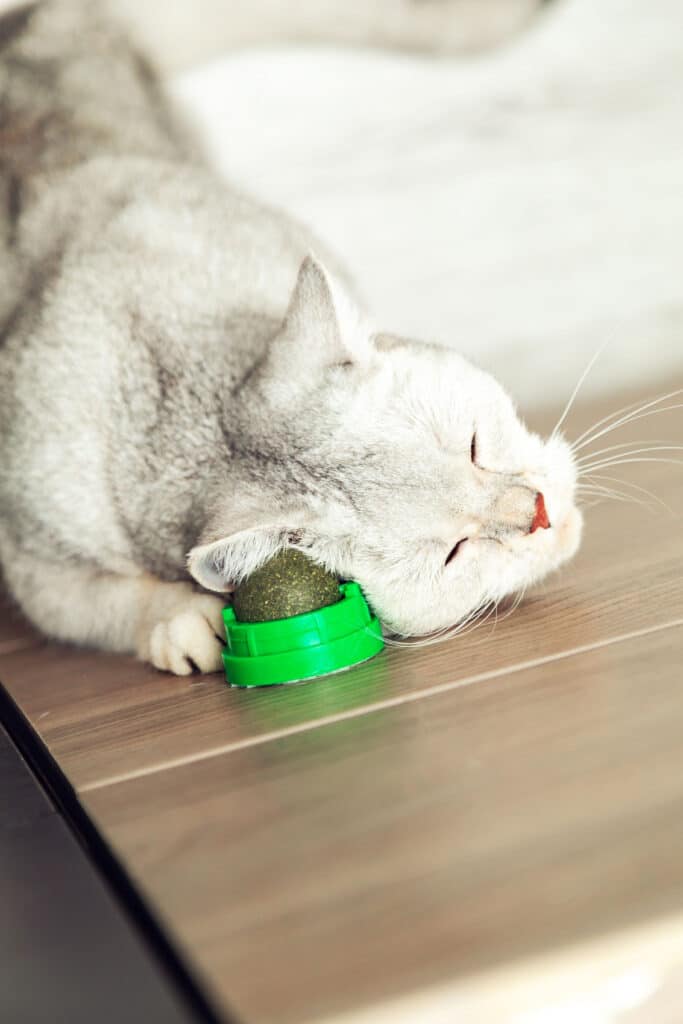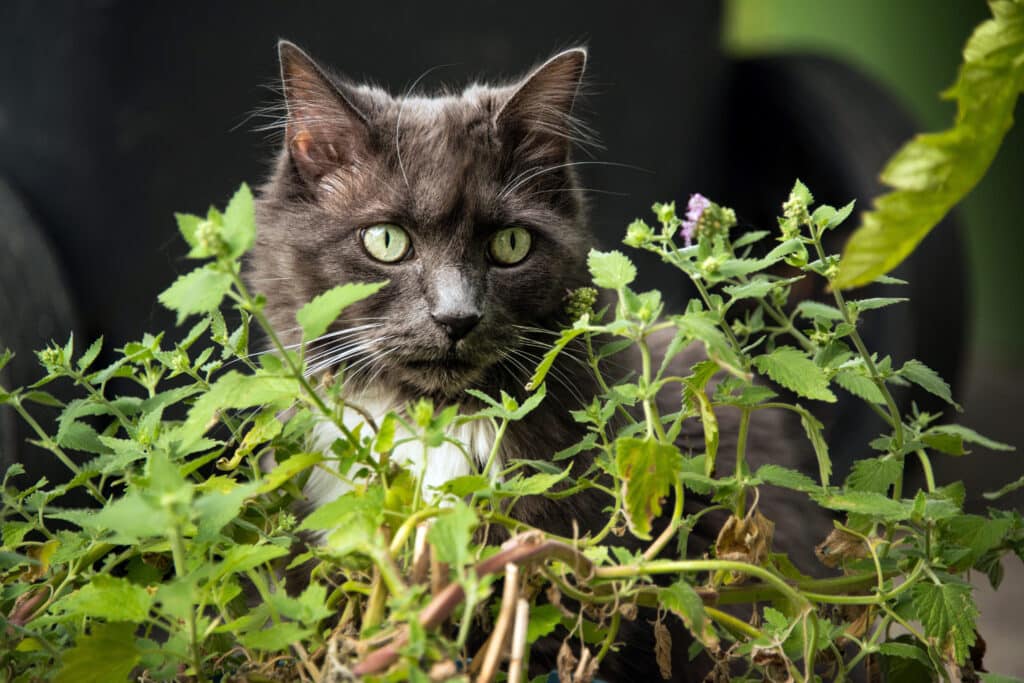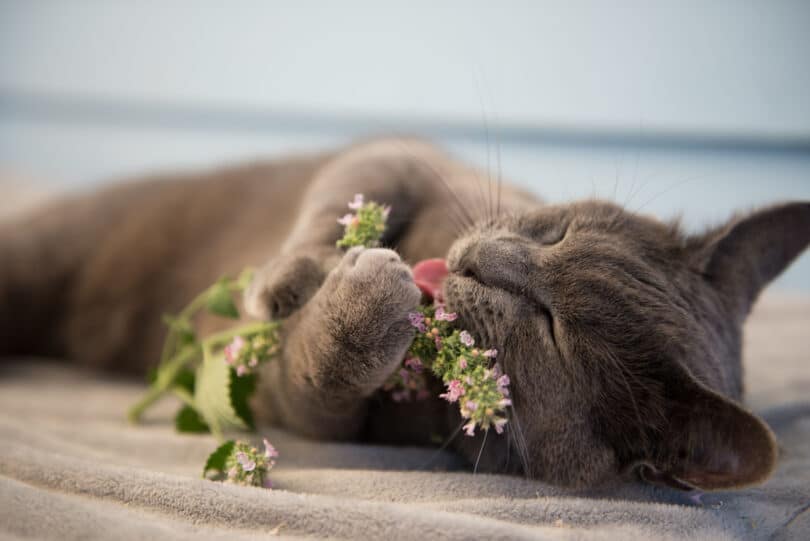If you’ve ever watched a cat get crazy on catnip; you’ve probably wondered what it is, and if this cat-craze plant, can work on people too.
What is catnip?
Much like drugs that can get a human high, like marijuana, or magic mushrooms; catnip is a regular plant that grows in the wild. It’s official name is Nepeta cataria, and other than ‘catnip’, it also goes by the names ‘catswort,’ ‘catwort,’ ‘catmint,’ and sometimes ‘kitty crack.’ The last is relevant because catnip is part of the mint family (Lamiaceae). It grows now in places like Europe, New Zealand, and North America since it was introduced; but originated in South and East Europe, Central Asia, and the Middle East.
We never really know when a plant came into existence for sure; but we do have scientific findings, and recordings, that can shine some light on when a plant became known to culture, or what it was used for in previous times. In the case of catnip, it was first written about by Swedish biologist Carl Linnaeus in 1738, with further mention in his 1753 book Species Plantarum.
Like a lot of plants, catnip has been used medically by different native traditions in different parts of the world. Medicinal uses include for stomach cramps, indigestion, fever, hives, and nervous system problems. It can be made into a juice, infusion (tea), tincture (alcohol extraction), used as a poultice, or even smoked. When used as a tea, its noted for its sedative and relaxant properties.

All plants are complicated organisms, with many different compounds within. We often simplify them by pointing out one or two main components; but this is never a full story. So, while catnip has many parts that work together, and which might produce reactions in conjunction; the one generally singled out, is nepetalactone. Nepetalactone is a terpenoid which functions as an insect repellent for flies, mosquitos, cockroaches, and termites. And which also acts as an intoxicating agent for cats.
Though it works to ward off bugs, the compound is more known in modern culture, for the intoxication it causes, and subsequent behaviors. Whether its bug-repellent nature is an aspect of why it attracts cats in the first place, is not known. Unfortunately, not everything is understood; so the ‘why’ of it gets less attention than the behaviors it brings on.
One possibility (which is strictly my supposition) is that the attraction is simply beneficial in that it helps to ward off insects, like mosquitos, that carry diseases. Those with a greater attraction to it, would have been (and still would be) more likely to get the repellent on their fur, and have a better chance of survival in places where insects like mosquitos, can transfer blood-born illnesses. In fact, chewing it (one of the things cats love to do) releases even more nepetalactone. It’s like the cats instinctively know what to do with it.
What does catnip do to cats?
The first thing it does for cats, is to give them protection from bugs and biting. Whether there is some underlying, subconscious understanding within the animals that this will be useful, or is just a lucky coincidence, is impossible to say. Its quite possible that without the physical response, cats would be way less likely to get the bug-repellent benefit at all.
If you’ve ever watched a cat around catnip, the physical response is quite intense. Even a docile cat can show a burst of energy around the plant, or toys made with it. Cats like to make contact with it. Whether you sprinkle it on the floor, buy toys that have catnip within, or have the actual plant; cats love to rub themselves in it, paw at it, lick it, chew it, and rub their faces in it. And they don’t like to be bothered while they do it.
Nepetalactone is thought to attract the cats to the plant. They detect it by special tissue in the nasal cavity called olfactory epithelium; and nepetalactone binds to receptors in this site. The compound is known for causing increased energy and movement. A cat might get wild-eyed, jump around in strange ways, and make noises not usually heard. This is true of house cats, as well as bigger cats like leopards, cougars, and lynxes. Even much bigger cats like lions and tigers also respond to the plant, but less consistently.

It’s a little reminiscent of animal trials with drugs like cocaine, where a rat can be seen repeatedly hitting a lever to get a hit. Cats unmistakably love this particular plant in an uncontrollable way; although unlike a drug like cocaine, it does have limits. Although some cats go as far as to get aggressive if they’re approached while in their catnip high; this does not go on forever.
The response to the plant is quite finite, and most cats have the strongest effect within 5-15 minutes. It leads to olfactory fatigue, a desensitization response, which makes the plant suddenly less appealing to the cat. What drove it crazy, becomes nothing of interest. This requires a rest period, which can be up to about two hours; after which the plant can once again incite craziness. Scientists expect that it creates a happy/energetic response when sniffed, and more of a downer/relaxed response when eaten.
If you’ve ever seen a cat walk by catnip without caring, this happens too. Not every cat is affected by the plant, and its approximated that 20-50% (depending on the source) don’t get crazy in its presence. The response, or lack of one, is thought to be hereditary. It also doesn’t usually affect younger cats (less than two-six months, depending on source) which could indicate that the ability for the response, is only relevant in adulthood. Perhaps cat lines that developed in places with more blood-born virus carrying insects, were more likely to survive if they had the trait of being attracted to the plant.
Though different studies were done to assess why some cats respond, and others do not; the results are conflicting, and no for-sure answer exists. There are, however, a few other plants that can also attract and stimulate cats; and some cats that don’t react to catnip, might have a similar reaction to a different plant. These include: the root and leaves of valerian, silver vine, and Tatarian honeysuckle wood.
Can humans get high on it too?
It’s great that cats have both a way to protect themselves from insects, and a way to feel good. Catnip, after all, is like a recreational drug for cats that do respond. And its not subtle. You can tell when a cat is into catnip. It’s such a large response, that it does beg the question, can humans get high off catnip too?
Before even getting into it, there’s something that should be obvious. We’ve watched cats get high off catnip for a long time without it ever becoming a human thing. And this despite (or, likely because of) human curiosity. It’s also been used medicinally for hundreds or thousands of years without this coming up. So immediately, we know it’s probably not the best candidate for getting a human high.

While publications tout it as non-psychoactive, it is pointed to for its relaxant effects; which means it can cause a psychoactive response in that way. For those who want more than this, however, its not known for any further high, than a possible sedating effect. Even smoking it – generally the best way to get a quick and powerful response from a drug, won’t produce more than calming. It will not do for us, essentially, what it does for cats. However, it seems when cats eat it, the response they get might be closer to a human response.
Overall, if you have an issue that you think catnip can help with, go ahead and try it. But, if you’re hoping to get all cat-like along with your furry friend, you might be disappointed. Best to let your cat have the catnip, while you stick to smoking weed. And, of course, if you’re one of those people who needs to try everything; at least you know that catnip is safe to consume. (Having said this, there is way less written on what happens when humans eat it; and its history of uses outside of eating, might indicate that it can cause sickness when directly consumed.)
Conclusion
The plant world is full of all kinds of treats for both humans and other animals. Just like you’ve got tons of plants to make you feel good, so does your cat. So if you want to make your cat happy; buy it some catnip. And remember, everyone – and everything – likes to have a good time.
This concept is similar, yet very separate, from the idea of animals that make a person high. In this case, and for the sake of your cat; you should not get the two ideas confused.
Welcome everyone! Thanks for being a part of Cannadelics.com; where we report on the most interesting stories in the general world of drugs. Hit us up frequently to keep up with the Joneses; and sign yourself up to the Cannadelics Weekly Newsletter; so you get all the important updates, direct to your email.









